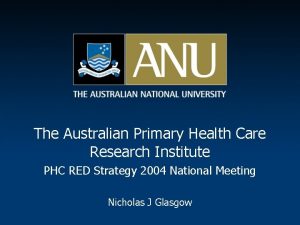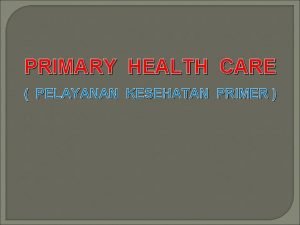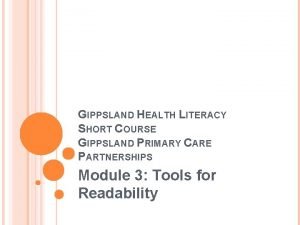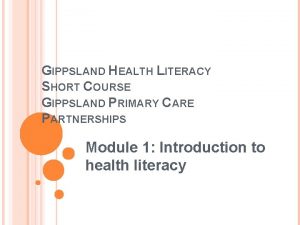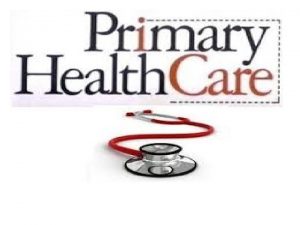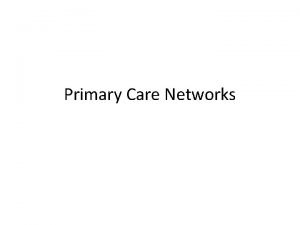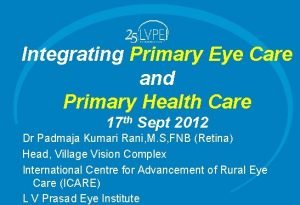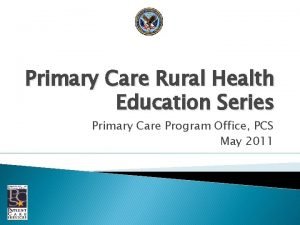GIPPSLAND HEALTH LITERACY SHORT COURSE GIPPSLAND PRIMARY CARE










- Slides: 10

GIPPSLAND HEALTH LITERACY SHORT COURSE GIPPSLAND PRIMARY CARE PARTNERSHIPS Module 2: Tools for measuring health literacy

TOOLS FOR MEASURING HEALTH LITERACY Tools that measure health literacy: TOFHLA : Test of Functional Health Literacy in Adults REALM: : Rapid Estimate of Adult Literacy in Medicine Newest Vital Sign

REALM: RAPID ESTIMATE OF ADULT LITERACY IN MEDICINE List of words patient reads out loud Designed to rapidly screen patients for potential health literacy problems To be used in public health and primary care settings to identify patients with low reading levels Identifies patient at a grade level by total score, i. e. 3 rd grade and below, 4 th to 6 th grade, 7 th to 8 th grade, high school REALM scores correlate highly with those of the standardised reading tests

TOFHLA: TEST OF FUNCTIONAL HEALTH LITERACY IN ADULTS developed using actual hospital materials 50 -item reading comprehension 17 -item numerical ability test takes up to 22 minutes to administer a valid, reliable indicator of patient ability to read health-related materials good correlation with REALM (correlation coefficient 0. 84) ‘The TOFHLA is a valid, reliable indicator of patient ability to read health-related materials. Data suggest that a high proportion of patients cannot perform basic reading tasks’ (Parker et al 1995).

ACTIVITY 4: NEWEST VITAL SIGN In groups of two, give each other the test, score the exercise and discuss your results. How does it feel to have your ‘health literacy’ tested? What does this mean about your health literacy?

SMALL GROUPS (3 -4): REVIEW RESOURCE: HEALTH LITERACY SCREENING TOOLS

SUGGESTED APPROACHES TO TESTING Morris et al (2006), suggests the use of a single item/question to assess service users’ health literacy: � How often do you need to have someone help you when you read instructions, pamphlets, or other written material from your doctor or pharmacy? Should a question like this be routine?

THE CHEW APPROACH TO TESTING Asking 3 questions: 1)How often do you have someone help you read written materials regarding your health conditions? 2)How often do you have problems learning about your health conditions because of difficulty understanding written information? 3)How confident are you filling out medical forms by yourself? (Chew, Bradley, & Boyko, 2004)

SHOULD YOU BE TESTING CLIENT’S HEALTH LITERACY? Population-based surveys conducted in Australia by and in other countries comparable to Australia (e. g. Canada, USA, Germany) have established reliable profiles of general and health literacy across the population The possible harm may outweigh any benefits…

SHOULD PRACTITIONERS BE TESTING THEIR CLIENT’S HEALTH LITERACY? What might be the risks? Might there be harms? What skills are needed to test health literacy? Is it really necessary? Are there other ways to assess how to work with clients who have low literacy?
 Tall+short h
Tall+short h Levels of nursing care primary secondary tertiary
Levels of nursing care primary secondary tertiary Lombrico gigante di gippsland
Lombrico gigante di gippsland Information and media literacy similarities
Information and media literacy similarities Venn diagram media and information literacy
Venn diagram media and information literacy Example of people as media
Example of people as media Cyber literacy and digital literacy
Cyber literacy and digital literacy Uccs lane center
Uccs lane center Australian primary health care research institute
Australian primary health care research institute Primary health care artinya
Primary health care artinya Principles of primary health care
Principles of primary health care








